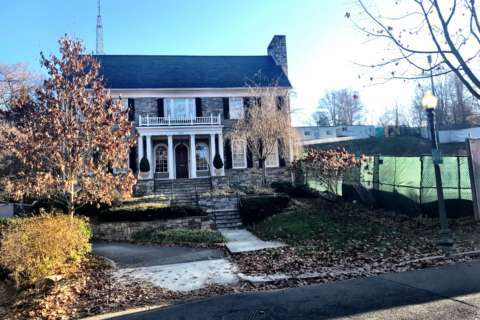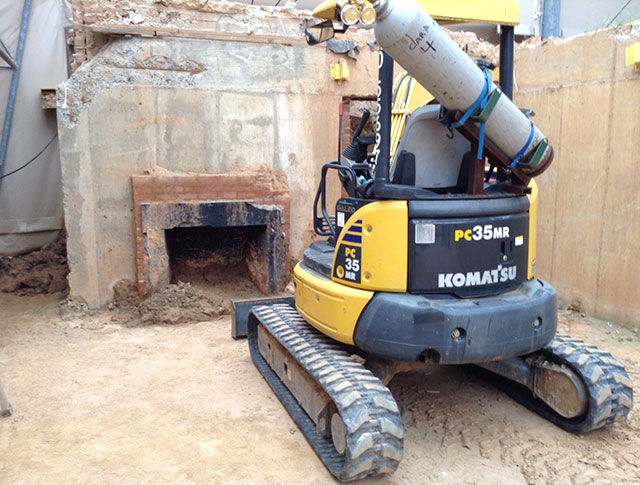WASHINGTON — Almost 100 of D.C.’s most expensive homes will soon be screened for remnants of chemical weapons which were test-fired during World War I, WTOP has learned.
Letters have been sent to 91 homeowners in the Spring Valley neighborhood, providing details of how the U.S. Army Corps of Engineers will inspect their properties, as part of the decades-long cleanup of the World War I chemical weapons testing site on the grounds of American University.
During World War I, about 661 acres in the Northwest section of D.C. were used by the U.S. government for research and testing of chemical agents, equipment and munitions.
At the time, munitions were test fired from what the Army Corps calls the Spring Valley Formerly Used Defense Site.
Now, the Corps is finalizing plans to screen almost 100 multimillion-dollar homes in an approximately half-mile swath that were within firing range during World War I, as well as homes near a possible disposal area.
Army Corps of Engineers spokesman Chris Gardner said, “There are no known munitions on these 91 properties and there is no need for the public to be concerned about the safety of their properties.”
“The upcoming Remedial Action is being done out of an abundance of caution and concern for the safety of residents,” Gardner said.
The Spring Valley cleanup project began in 1993, when a contractor unearthed buried military ordnance on 52nd Court Northwest.
Recently, the cleanup has focused on the property at 4825 Glenbrook Rd. Northwest. A home that had been built on the site was removed in 2012.
Digging is temporarily halted at the site after seven workers were sickened and temporarily hospitalized in August 2017.
Work on the Glenbrook Road site has included labor-intensive hand-digging. Workers discovered low levels of Mustard and Lewisite, colorless and odorless compounds, which can cause blistering and lung irritation.
Beginning in 1993, the Corps has completed higher-risked cleanups, targeting munitions burial pits and debris fields.
More than 1,600 homes were screened to identify potentially elevated levels of arsenic, and the Army Corps removed and replaced contaminated soil at 180 homes.
In the upcoming screening, Gardner said new technology will allow scientists to determine whether items found on properties are intact munitions, or harmless items.
Using mobile advanced geophysical classification sensors — essentially, next-generation metal detectors — contractors will be able to not only map underground items, but know whether they pose a danger.
“We now have the technology that can look at anomalies underground and accurately, depending on the conditions of the property, determine if it is an item that needs to be removed,” according to an Army Corps fact sheet.
Gardner said this will be the first time this technology will be used in a residential cleanup.
During a pilot program, scientists detected and removed hundreds of pieces of buried, harmless “cultural debris,” including nails and rebar, along with an inert practice round mortar. The Manned Portable Vector was able to correctly identify 100 percent of the buried objects.
How the screening will work
Participation in the screening of the 91 properties is not mandatory. Homeowners will need to sign permission to allow the government to come onto the property.
An arborist will appraise the value of all landscaping on the property. An assessment will be presented to the homeowner for approval.
The geophysical data collecting team will walk the property and identify items that will need to be moved — for instance, plants, tables, or trampolines.
After the initial screening and mapping, a dig list will be created to remove items of interest.
Following removal of any remnants, and subsequent testing, the Corps will restore the home’s property to how it was before the screening. Each property will take about 15 days.
If a property is surveyed, and select anomalies removed, the homeowner will receive a closure letter, which can be shared with a realtor or prospective buyer.
The project’s remedial action phase is expected to start in the next few months, and will take about three years to complete.








